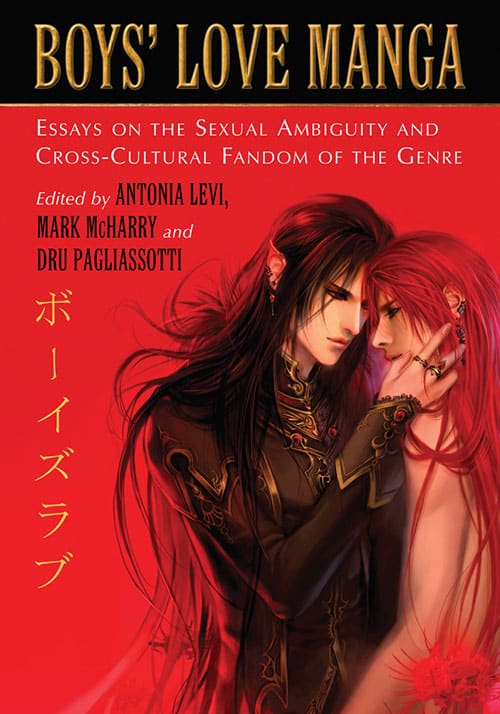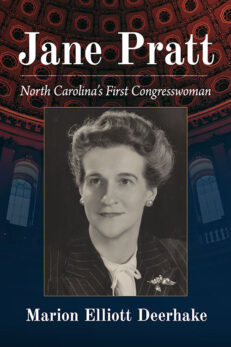Boys’ Love Manga
Essays on the Sexual Ambiguity and Cross-Cultural Fandom of the Genre
$35.00
In stock
About the Book
“Boys’ love,” a male-male homoerotic genre written primarily by women for women, enjoys global popularity and is one of the most rapidly growing publishing niches in the United States. It is found in manga, anime, novels, movies, electronic games, and fan-created fiction, artwork, and video. This collection of 14 essays addresses boys’ love as it has been received and modified by fans outside Japan as a commodity, controversy, and culture.
About the Author(s)
Bibliographic Details
Edited by Antonia Levi, Mark McHarry and Dru Pagliassotti
Format: softcover (7 x 10)
Pages: 280
Bibliographic Info: 11 photos, glossary, notes, bibliographies, index
Copyright Date: 2010
pISBN: 978-0-7864-4195-2
eISBN: 978-0-7864-5627-7
Imprint: McFarland
Table of Contents
Introduction
ANTONIA LEVI 1
Part One: Boys’ Love and Global Publishing
1. Gift Versus Capitalist Economies: Exchanging Anime and Manga in the U.S.
HOPE DONOVAN 11
2. From BRAVO to Animexx.de to Export: Capitalizing on German Boys’ Love Fandom, Culturally, Socially and Economically
PAUL M. MALONE 23
3. Boys’ Love Thrives in Conservative Indonesia
YAMILA ABRAHAM 44
Part Two: Genre and Readership
4. Better Than Romance? Japanese BL Manga and the Subgenre of Male/Male Romantic Fiction
DRU PAGLIASSOTTI 59
5. Yaoi and Slash Fiction: Women Writing, Reading, and Getting Off ?
MARK JOHN ISOLA 84
6. 101 Uses for Boys: Communing with the Reader in Yaoi and Slash
MARNI STANLEY 99
7. “She Should Just Die in a Ditch”: Fan Reactions to Female Characters in Boys’ Love Manga
M. M. BLAIR 110
8. Rewriting Gender and Sexuality in English-Language Yaoi Fanfiction
TAN BEE KEE 126
Part Three: Boys’ Love and Perceptions of the Queer
9. Uttering the Absurd, Revaluing the Abject: Femininity and the Disavowal of Homosexuality in Transnational Boys’ Love Manga
NEAL K. AKATSUKA 159
10. Boys in Love in Boys’ Love: Discourses West/East and the Abject in Subject Formation
MARK MCHARRY 177
11. Queering the Quotidian: Yaoi, Narrative Pleasures and Reader Response
MARK VICARS and KIM SENIOR 190
12. Gay or Gei? Reading “Realness” in Japanese Yaoi Manga
ALEXIS HALL 211
13. Raping Apollo: Sexual Difference and the Yaoi Phenomenon
ALAN WILLIAMS 221
14. Hidden in Straight Sight: Trans*gressing Gender and Sexuality via BL
ULI MEYER 232
Glossary
About the Contributors 265
Index 267
Book Reviews & Awards
- “This volume, with its cross-cultural approach combined with a strong focus on fannish activities, is certainly a valuable contribution to the [manga studies] movement”—Transformative Works and Cultures
- “At last, this collection pries open the last of the closet doors and allows for the analysis of the narratives of gay, transgendered, and intersexual subjects to emerge. Manga have been a unique source and archive of such work, slowly developing what has become a massive, global fan base. Each of the narratives in this anthology takes on a particular facet of the complicated and complex area of culture that surrounds the boys’ love genre, moving the discussion, finally, out into the light of day.”—Frenchy Lunning, editor-in-chief of Mechademia and professor, Minneapolis College of Art and Design
- “Boys’ Love Manga is a very welcome contribution to the field of manga and anime studies. It has something to offer in particular to scholars of gender and sexuality, of globalization, and of new media.”—James Welker, Intersections: Gender and Sexuality in Asia and the Pacific





